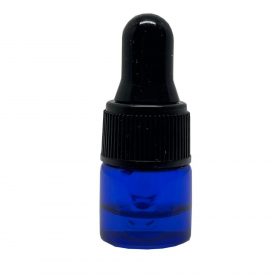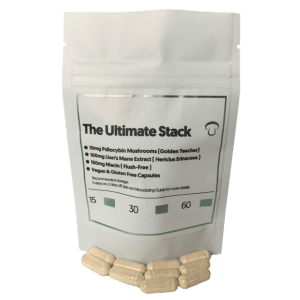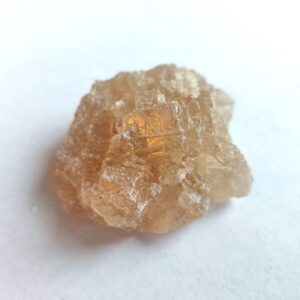Cactus Blend #1 – San Pedro
Product description
The San Pedro cactus (Trichocereus/Echinopsis pachanoi) is a type of cactus that has been used for healing and religious divination in the Andes Mountains region for over 3,000 years. San Pedro is a tool for meditation and self-awareness, helping to clear past wounds and enable a more heart-entered way of being. It can bring limiting thoughts and beliefs to the surface of one’s consciousness; what no longer serves our highest good has the opportunity to be released.
The History Of San Pedro
The San Pedro cactus (Trichocereus/Echinopsis pachanoi) is a type of cactus that has been used for healing and religious divination in the Andes Mountains region for over 3,000 years. San Pedro or Huachuma as it is traditionally known is a light green, nearly spineless variant of the cactus family. It features nocturnal blossoms and can grow more than five meters tall. Its native environment is high on the hills of the Andes mountains some 6 500 to 9 700 feet above sea level. It’s known to be one of the most powerful natural psychedelics on earth. The San Pedro cactus is named after Saint Peter, the patron saint of gatekeepers and travellers.
Although Roman Catholic church authorities after the Spanish conquest attempted to suppress its use, this failed, as shown by the Christian element in the common name “San Pedro cactus” – “Saint Peter” cactus. The name is attributed to the belief that just as St Peter holds the keys to heaven, the effects of the cactus allow users “to reach heaven while still on earth.”
In ancient times, shamans would use this natural psychedelic to communicate with their ancestors and also help bring about healing in people who were sick or had mental health struggles like depression. In a traditional setting, the medicine is typically prepared as a tea; pieces of the stem are boiled for a few hours, and once the liquid is cooled it is taken orally.
The families who work with San Pedro (Trichocereus pachanoi) actively replant these medicines for sustainability. For this reason, the products we offer are grown in gardens, in small plots combined with responsible wild harvesting.
Peruvian torch cactus is mostly collected from the wild and therefore we do not offer this product in our store.
For the above mentioned reasons we consciously offer the medicine to ensure the continuity of processes and to preserve the natural balance of the cactus.
The Effects Of San Pedro
San Pedro Cactus is known as a gentle, powerful Masculine teacher plant. The active ingredient in San Pedro cactus is mescaline.
Mescaline also activates serotonin and dopamine receptors, which could help boost mood and treat depression. In fact, one of the traditional therapeutic uses for peyote was as an antidepressant, and depression scores are reportedly low among members of the Native American Church, where peyote use is common.
In large doses, it gives its users an intense feeling of euphoria as well as visual effects from hallucinations to out-of-body experiences.
San Pedro is a tool for meditation and self-awareness, helping to clear past wounds and enable a more heart-entered way of being. It can bring limiting thoughts and beliefs to the surface of one’s consciousness; what no longer serves our highest good has the opportunity to be released.
Through purifying and balancing the body, mind, and spirit, it facilitates the expansion of consciousness and makes room for more lightness in our life experience. Freeing ourselves of our limitations helps us feel a greater sense well-being, love and affinity for others, and a deeper connectedness with Mother Earth.
Many users find mescaline more consistently reliable than LSD and psilocybin and find that the personal benefit can also be greater. In essence, other psychedelics including LSD feel as though you are guided through your day, whereas San Pedro gives you the feeling that you are guiding your day. San Pedro also lacks the edginess of other stimulants allowing for more fluid management of your day.
Self-experimenters around the world are reporting a much wider range of benefits. These include personal insights, mood enhancement, increased empathy and creativity, lifestyle changes, and even lucid dreams. Most people find also mescaline personally or spiritually transformative, and many emerge with a lasting appreciation for the interconnectedness of all life in the universe, and of their role within it.
Some find it useful for treating the symptoms or even the underlying causes of depression, experiencing a sense of peace and calm without the “numbness” of conventional medications. For others, it has the opposite effect of actually sharpening the senses and enhancing mental clarity. Mescaline can make it easier to get into your flow state.
In 1966, a research team including James Fadiman and Myron Stolaroff studied the effects of mescaline on 27 healthy men, testing for changes in their problem-solving abilities.16 The results indicated that mescaline (and LSD, which they also tested) facilitated created problem-solving in the volunteers. They found the psychedelics particularly effective in the illumination (aka eureka) phase of problem-solving. The data also suggested that the improvement in problem-solving may last for several weeks.
Mescaline could also help reduce suicidal thoughts, according to researchers at the University of Alabama. Using data from the National Survey on Drug Use and Health, the researchers found that people who have used a psychedelic drug at least once in their life show lower rates of suicidal thinking.
A 2013 study also found that lifetime mescaline or peyote use was significantly linked to a lower rate of agoraphobia, an anxiety disorder where subjects perceive their surrounding environment to be threatening.
Addiction is another promising application for mescaline’s therapeutic potential. As peyote, mescaline has long been used in traditional ceremonial contexts to treat alcoholism. It’s interesting to note that while alcohol abuse rates among the Navajo and other Native American tribes are said to be roughly twice the U.S. average, they are significantly lower among NAC members. This correlation isn’t conclusive, of course, but research does suggest that there could be a more-than-causal link. In fact, a researcher at Harvard Medical School who has spent years studying peyote use found that the substance has reduced rates of alcoholism and drug abuse among Native Americans. He also concluded that the ceremonies themselves are an important element to the plant’s healing effects.
Dosing
For this blend, 1-2 capsules is considered to be a micro dose, however some users may require 3-4. It is suggested to follow the Fadiman protocol of once every 3-4 days. This product can be taken more frequently however tolerance will grow quickly.
This product is best consumed on an empty stomach.
After consuming San Pedro, most people start to feel the effects within 15-40 minutes, but it could take up to three hours to peak. Coming down can take another three hours, and the whole experience usually lasts 10 hours or so. San Pedro is best taken in the morning as it usually leaves a lasting afterglow, which can make it difficult to sleep after the effects wear off.
Pure mescaline, either synthetic or isolated from a natural source, requires relatively high doses to achieve its full psychedelic effects. We don’t advise attempting a full dose with this product as it would consist of upward of 40 capsules for a woman and 60 capsules for a man.
Storage
Mescaline is a very stable compound, so your San Pedro cactus powder can be indefinitely stored in an air-tight container in a cool, dark, and dry place.
Warnings
Mescaline and mescaline-containing cacti are among the safest psychedelics out there with a long history of responsible ceremonial use and not one single case of a fatal overdose. However, there are some potential risks to be aware of, as well as a number of specific contraindications.
Vasoconstriction (the constriction of blood vessels and elevation of blood pressure) may be an issue, particularly during strenuous physical activity, although this is less likely to be a problem with microdosing. For the same reason, it should never be combined with blood pressure medications. Anyone with high blood pressure or heart problems should avoid taking mescaline in general.
Due to the risk of fetal abnormalities and other complications, it should also be avoided by pregnant or breastfeeding women—despite the reputed traditional use of peyote by Huichol women during pregnancy.
Evidence suggests mescaline may be dangerous in combination with a number of other substances, including tramadol, immunomodulators, alcohol, and stimulants.
Also be aware of MAOIs (monoamine oxidase inhibitors), present in some antidepressants (e.g. Marplan, Nardil) and foods containing tyramine (aged cheeses, cured meats, fermented soy products, beer, sauerkraut, etc.). Although not an established contraindication for mescaline, MAOIs could worsen nausea associated with whole cactus preparations and may even be dangerous in combination.
Additional Information
Dose 1 x 900mg
Capsule Quantity 30 Capsules










